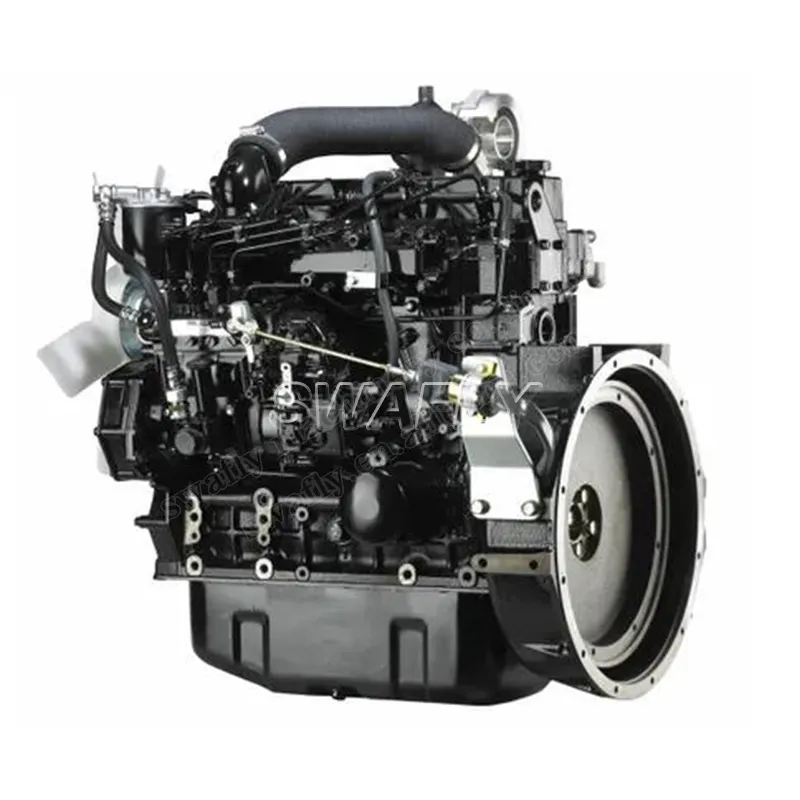A diesel engine is an engine that burns diesel to obtain energy release. It was invented by German inventor Rudolf Diesel in 1892. To commemorate this inventor, diesel is represented by his surname Diesel, and diesel engines are also called Diesel engines. Today we will learn how a diesel engine works.
The piston moves upward from the bottom dead center, and the exhaust gas turbocharger sends fresh air with a certain pressure into the cylinder; when the piston runs to a certain point, the scavenging port is blocked, the cylinder becomes closed, the piston continues to move upward, and the pressure in the cylinder gradually Increase.
When the piston reaches a certain moment before the top dead center, the fuel is injected into the combustion chamber in a good atomization state through the injector, mixes with the air, and then ignites and burns on its own. When the piston crosses the top dead center, the gas pressure and temperature in the cylinder rise sharply. Under the action of high-temperature and high-pressure gas, the piston moves from the top dead center to the bottom dead center, transmitting power to the crankshaft through the connecting rod, and the crankshaft rotates. Output Power. As the piston moves downward, the cylinder volume gradually increases, and the pressure and temperature of the gas gradually decrease. until the exhaust valve opens.

The working process of a industrial engine is actually the same as that of a gasoline engine. Each working cycle also goes through the four strokes of intake, compression, power and exhaust.
The working fluid entering the cylinder is pure air. Since the resistance of the diesel engine's intake system is small, the intake end pressure pa= (0.85~0.95)p0 is higher than that of the gasoline engine. The intake end temperature Ta=300~340K, which is lower than that of gasoline engines.
The task of the air intake is to fill the cylinder with fresh air. When the intake stroke begins, the piston is at top dead center and there is still some exhaust gas left in the combustion chamber inside the cylinder. When the crankshaft rotates, the connecting rod moves the piston from top dead center to bottom dead center. At the same time, the transmission mechanism connected to the crankshaft is used to open the intake valve. As the piston moves downward, the volume above the piston in the cylinder gradually increases: causing the air pressure in the cylinder to be lower than the pressure in the intake pipe, so outside air continues to fill the cylinder.
Since the compressed working fluid is pure air, the compression ratio of a diesel engine is higher than that of a gasoline engine (generally ε=16~22). The pressure at the end of compression is 3000~5000kPa, and the temperature at the end of compression is 750~1000K, which greatly exceeds the auto-ignition temperature of diesel (about 520K).
When the compression stroke is nearing the end, under the action of the high-pressure oil pump, diesel is injected into the cylinder combustion chamber through the injector at a high pressure of about 10MPa. It mixes with air in a short period of time and immediately ignites and burns on its own. The pressure of the gas in the cylinder rises rapidly, reaching a maximum of 5000~9000kPa, and the maximum temperature reaches 1800~2000K. Because the diesel engine ignites and burns by itself through compression, it is called a compression ignition engine.
The exhaust of a diesel engine is basically the same as that of a gasoline engine, except that the exhaust temperature is lower than that of a gasoline engine. Generally Tr=700~900K. For a single-cylinder engine, its rotational speed is uneven, the engine operation is unstable, and the vibration is large. This is because only one of the four strokes does work, and the other three strokes consume power in preparation for doing work. In order to solve this problem, the flywheel must have a large enough moment of inertia, which in turn results in an increase in the mass and size of the entire engine. The use of multi-cylinder engines can make up for the above shortcomings. Modern automobiles mostly use four-cylinder, six-cylinder and eight-cylinder engines.
Because the working principle of the diesel engine is to compress the gas itself, rely on combustion to generate power, and drive the flywheel to rotate, storing energy for the next work and producing more exhaust gas pollution, so gradually more and more cars are switching to gasoline or even ne energy sources. Instead of diesel.
Previous: How do Tissue Paper Roll Clamps work?
Next: Enhancing Driving Safety Through CAN Bus Screen Display
Copyright:@2020-2021
Comments Please sign in or sign up to post.
0
0 of 500 characters used